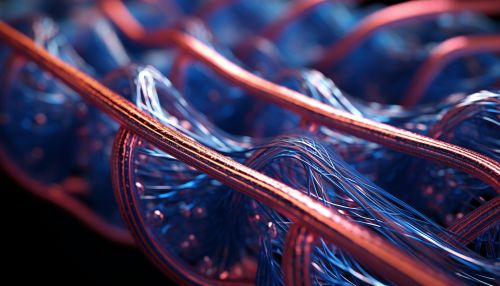Kinesin
Introduction
Kinesin is a protein that functions as a molecular motor, which means it moves along microtubule filaments in cells. This movement is powered by the hydrolysis of adenosine triphosphate (ATP), a process that releases energy. Kinesin plays crucial roles in various cellular processes, including mitosis, meiosis, and transport of cellular cargo.


Structure
Kinesin is composed of two heavy chains and two light chains, forming a heterotetramer. The heavy chains contain a globular head, a flexible neck, and a long tail. The head, also known as the motor domain, binds to microtubules and ATP. The neck links the head to the tail, and the tail is involved in cargo binding.
Function
Kinesin moves along microtubules in a process known as anterograde transport, which is from the center of the cell towards the periphery. This movement is crucial for the transport of various cellular cargoes, including vesicles, organelles, and protein complexes.
Mechanism of Movement
The movement of kinesin along microtubules is a complex process that involves several steps. First, the head of the kinesin binds to a microtubule and ATP. The hydrolysis of ATP then causes a conformational change in the kinesin, which moves it along the microtubule. This process is repeated, allowing the kinesin to 'walk' along the microtubule.
Role in Disease
Mutations in kinesin can lead to various diseases, including neurodegenerative disorders and cancer. For example, mutations in kinesin-1 have been linked to hereditary spastic paraplegia, a neurological disorder. Similarly, overexpression of kinesin-5 is associated with certain types of cancer.
